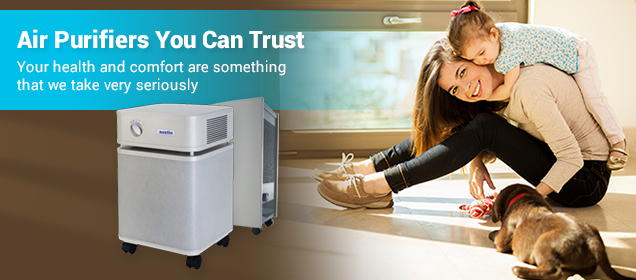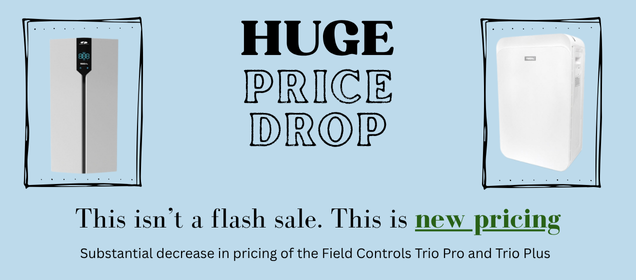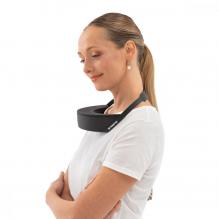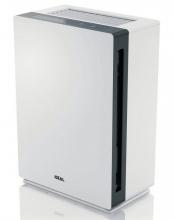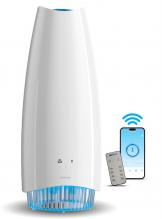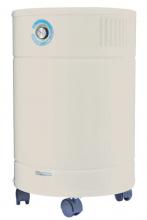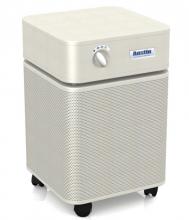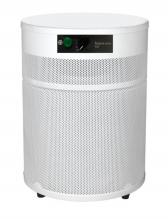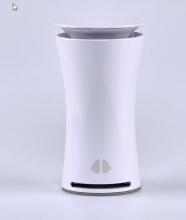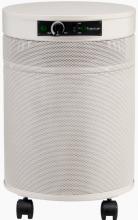We know that air pollution is a big problem. We’ve seen the World Health Organization and other institutions come out with news that more than half of the world‘s population battles poor air quality in their communities on a regular basis.
As for the specific harm that air pollution produces, scientists are still studying how this works.
There’s a general consensus that many types of air pollution cause real respiratory issues that can trigger allergies or asthma. They can worsen conditions like COPD. They can add to pneumonia or lung irritation.
Effects on the Brain
The science on how air pollution affects the brain is a little different. People are paying a lot of attention. New studies show us these things. They're aimed at figuring out whether dementia and cognitive decline are tied to air quality that someone is exposed to over their lifetime.
Check out this abstract from a recent formal study:
“The biological pathways and the extent to which air pollution can affect the cognitive decline in the elderly (is not fully understood). In recent years, the impact of air pollution on cognitive impairment has become an active area of epidemiological research and several studies provided supporting evidence. This short review focuses on epidemiological studies in older adults. It investigates the associations between long-term air pollution exposure and cognitive impairment and decline. Most studies were observational studies and reported assessment of cognitive function using different cognitive scores and air pollution exposure in adults older than 50 years. The results from these studies indicate that exposure to ambient air pollution can have adverse effects on cognitive decline and impairment …(we need) longer-term studies to confirm the findings.”
In the main text, the authors clarify:
“Studies on air pollution exposure with cardiovascular and cerebrovascular diseases suggest a harmful impact on the brain and cognitive processes through vascular and inflammatory mechanisms,” they write. “However, the extent to which air pollution can affect cognitive decline and dementia in the elderly is not fully understood.”
So how do we figure out whether this link exists? One way is with hands-on testing that can reveal whether the cause and effect is there, or not.
Testing the Theory
An article at Health and Me talks about a specific trial to figure out how air pollution affects cognitive function. We see this in the Journals of Gerontology, and as the author writes, “indicates that breathing polluted air might be bad for the brains of older adults.”
How?
“The study suggests that being exposed to pollution could make seniors more likely to develop problems with their thinking and memory, possibly even increasing their chances of getting dementia,” writes the anonymous author of the piece, hosted at MSN.
For this study, researchers reportedly looked at a group of over 1000 elderly persons over the age of 65. The British trial subjects took a test measuring brain functions.
The people who lived in the most polluted areas scored in the lower third of test results. As the article posits:
“This suggests that the parts of the brain responsible for understanding and using language might be particularly vulnerable to the damaging effects of air pollution.”
That’s with the understanding that correlation is not necessarily causation, and there are other factors in play.
Two Main Types of Relevant Air Pollution
Reporting on the study specifically notes that scientists found nitrogen dioxide and PM 2.5 to be the two worst types of pollution for impacting cognitive decline in the elderly.
The writer also revealed where these two kinds of air pollution come from.
Nitrogen dioxide comes from vehicle exhaust and other similar kinds of fossil fuel production. That includes the output of power plants. When asked “where does nitrogen dioxide come from?” formal definitions add the following: “Industrial facilities like factories, refineries, and cement kilns and construction equipment and generators – anything that uses internal combustion.”
PM 2.5 is different. It can come from natural carbon combustion from burning coal, or even wood. So you might say it's "natural." But that doesn't mean it can't be harmful.
That means that wildfires, as well as your campfires and fireplace fires, will release these ultrafine particles. PM 2.5 can get into your lungs and cause various health conditions.
Essentially, even burning wood is a form of air pollution that we have to watch out for.
A recent piece from the National Institute of Environmental Health Sciences provides this sidebar on new research into wood burning and wildfires in particular:
“High temperatures and droughts regularly create conditions that promote wildfires. As these infernos become larger and more frequent, concerns have mounted about the adverse effects of smoke on public health. NIEHS-funded researchers are studying the chronic and acute health conditions that result from short- and long-term wildfire smoke exposure. One recent study suggests that PM2.5 from wildfires poses a greater risk for dementia than equivalent-sized particles from other sources. This risk is particularly pronounced among socioeconomically disadvantaged groups.”
Dealing with PM 2.5
Specifically, PM 2.5 indicates small particles with diameters around 2.5 microns, and these are hard to avoid if they are heavily present in the air. You certainly can’t see them, and it’s hard to know if you’re getting exposed. You might feel symptoms, including a scratchy throat, burning or itching , red eyes, sneezing or coughing, or general respiratory problems.
This is from Harvard Medicine:
“Most air pollution-induced sickness and mortality can be traced to particulates. No larger than 10 microns, or the size of a dust mote, these solid particles and liquid droplets slip through the body’s initial filters and clog its airways. Exposure to them can cause asthma, chronic bronchitis, chronic obstructive pulmonary disease, and lung cancer. Particulates under 2.5 microns, or PM 2.5, such as flecks of soot, can permeate the bloodstream, leading to stroke, heart attack, and changes in blood pressure and cholesterol levels.”
What We Can Do For Seniors
If you’re thinking about how to combat air pollution on behalf of the elderly, there are some actionable steps that you can take to support elderly people as they age.
First, we can take a look at the air quality in communities by being vigilant about the pollution that occurs. Where is it coming from? How can it be mitigated? What is the effect?
We can also look at instances of wood fire burning, and where that smoke goes. If it’s a small fire and the smoke disperses safely, that’s less of an issue then if someone burns a fire in a fireplace or a poorly sealed wood stove, and all of that PM2.5 is getting circulated in the indoor air.
So looking at small “point of use” fires is important, too. That’s true whether the fire is in an open pit, a mantle fireplace in the living room, a chimney or fire pit, or anything else, or whether a neighbor is burning wood or leaves or trash, etc.
Another important point is that this type of impact tends to build up during a person’s lifetime. So one small fire might not be an issue, but repeated combustion and smoke trapping is going to become more of a hazard over time.
Protecting Your Home
What can you do if these sorts of pollutants are present in your indoor air?
Because our homes are so well sealed, if they have new windows, that air tends to keep cycling and can really impact someone’s health.
That means it’s important to keep our indoor air as clean as possible. That’s not just true for limiting PM 2.5 or even trace amounts of nitrogen dioxide if they’re present. It also extends to various kinds of chemicals found in consumer items, and even natural items like mold that can be hazardous.
The first step is to use an air monitor to see what’s present in your indoor air.
Then you can utilize air purifier units with modern, effective technologies, like HEPA filters, activated carbon, heat treatment, probiotics, or other methods that will help cleanse the air and remove a wide range of pollutants.
Many people can benefit from this kind of health protection. Some of the most at-risk groups are children, pregnant women, and those with disabilities. But elderly people will also benefit, to the extent that if air pollution is worsening their cognitive decline, decreasing it will help.
Let US Air Purifiers LLC help you to figure out what’s best for your space, and your family, with specific metrics on air changes per hour and efficacy indoors. Check with us for the breakdown on different kinds of pollutants, how they work, and what’s most effective, as well as manufacturer ratings and other key information that you will want as you shop. Get confident about the air around you!
